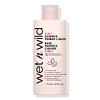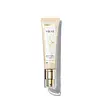What's inside
What's inside
 Key Ingredients
Key Ingredients

 Benefits
Benefits

 Concerns
Concerns

 Ingredients Side-by-side
Ingredients Side-by-side

Water
Skin ConditioningGalactomyces Ferment Filtrate
HumectantMethyl Gluceth-20
HumectantPropanediol
SolventButylene Glycol
HumectantVp/Va Copolymer
Rosa Damascena Flower Water
MaskingPhenoxyethanol
PreservativeSilica
AbrasiveSodium Acrylates Crosspolymer-2
AbsorbentEthylhexylglycerin
Skin ConditioningCarbomer
Emulsion StabilisingDisodium EDTA
Propylene Glycol
HumectantCalendula Officinalis Flower Extract
MaskingGlycerin
HumectantSodium Hydroxide
BufferingLeuconostoc Ferment Filtrate
AntimicrobialPortulaca Oleracea Extract
Skin ConditioningLaurtrimonium Chloride
Emulsifying1,2-Hexanediol
Skin ConditioningBeta-Glucan
Skin ConditioningEthyl Acetate
PerfumingAcrylic Acid
Water, Galactomyces Ferment Filtrate, Methyl Gluceth-20, Propanediol, Butylene Glycol, Vp/Va Copolymer, Rosa Damascena Flower Water, Phenoxyethanol, Silica, Sodium Acrylates Crosspolymer-2, Ethylhexylglycerin, Carbomer, Disodium EDTA, Propylene Glycol, Calendula Officinalis Flower Extract, Glycerin, Sodium Hydroxide, Leuconostoc Ferment Filtrate, Portulaca Oleracea Extract, Laurtrimonium Chloride, 1,2-Hexanediol, Beta-Glucan, Ethyl Acetate, Acrylic Acid
Water
Skin ConditioningGlycerin
HumectantPropylene Glycol Dicaprylate/Dicaprate
Emollient1,2-Hexanediol
Skin ConditioningCaprylic/Capric Triglyceride
MaskingNiacinamide
SmoothingHydroxyethyl Acrylate/Sodium Acryloyldimethyl Taurate Copolymer
Emulsion StabilisingMica
Cosmetic ColorantSynthetic Fluorphlogopite
Propanediol
SolventRosa Damascena Flower Water
MaskingPolysorbate 60
EmulsifyingSorbitan Isostearate
EmulsifyingOrchid Extract
Skin ConditioningGlyceryl Acrylate/Acrylic Acid Copolymer
HumectantButylene Glycol
HumectantPhenoxyethanol
PreservativeSodium Phytate
Beta-Glucan
Skin ConditioningCitrus Limon Peel Oil
MaskingCitrus Aurantium Dulcis Flower Oil
AstringentCananga Odorata Flower Oil
MaskingCitrus Tangerina Peel Oil
MaskingThymus Vulgaris Oil
MaskingRosa Damascena Flower Oil
MaskingEthylhexylglycerin
Skin ConditioningSantalum Album Oil
MaskingPyrus Communis Fruit Extract
Skin ConditioningDehydroacetic Acid
PreservativeCI 77891
Cosmetic ColorantCI 77491
Cosmetic ColorantLimonene
PerfumingBenzyl Salicylate
PerfumingLinalool
PerfumingBenzyl Alcohol
PerfumingWater, Glycerin, Propylene Glycol Dicaprylate/Dicaprate, 1,2-Hexanediol, Caprylic/Capric Triglyceride, Niacinamide, Hydroxyethyl Acrylate/Sodium Acryloyldimethyl Taurate Copolymer, Mica, Synthetic Fluorphlogopite, Propanediol, Rosa Damascena Flower Water, Polysorbate 60, Sorbitan Isostearate, Orchid Extract, Glyceryl Acrylate/Acrylic Acid Copolymer, Butylene Glycol, Phenoxyethanol, Sodium Phytate, Beta-Glucan, Citrus Limon Peel Oil, Citrus Aurantium Dulcis Flower Oil, Cananga Odorata Flower Oil, Citrus Tangerina Peel Oil, Thymus Vulgaris Oil, Rosa Damascena Flower Oil, Ethylhexylglycerin, Santalum Album Oil, Pyrus Communis Fruit Extract, Dehydroacetic Acid, CI 77891, CI 77491, Limonene, Benzyl Salicylate, Linalool, Benzyl Alcohol
Ingredients Explained
These ingredients are found in both products.
Ingredients higher up in an ingredient list are typically present in a larger amount.
1,2-Hexanediol is a synthetic liquid and another multi-functional powerhouse.
It is a:
- Humectant, drawing moisture into the skin
- Emollient, helping to soften skin
- Solvent, dispersing and stabilizing formulas
- Preservative booster, enhancing the antimicrobial activity of other preservatives
Beta-Glucan is a polysaccharide. It can be derived from the cell walls of seaweed, oats, yeast, and fungi. It hydrates the skin and helps boost your skin's natural barrier.
As an antioxidant, beta-glucan helps fight free-radicals. Free-radicals are molecules that may damage your skin cells, such as pollution.
Studies show this ingredient may be an effective wrinkle reducer as it can deeply penetrate into skin. It has also been show to help with wound healing.
Learn more about Beta-GlucanButylene Glycol (or BG) is used within cosmetic products for a few different reasons:
Overall, Butylene Glycol is a safe and well-rounded ingredient that works well with other ingredients.
Though this ingredient works well with most skin types, some people with sensitive skin may experience a reaction such as allergic rashes, closed comedones, or itchiness.
Learn more about Butylene GlycolEthylhexylglycerin (we can't pronounce this either) is commonly used as a preservative and skin softener. It is derived from glyceryl.
You might see Ethylhexylglycerin often paired with other preservatives such as phenoxyethanol. Ethylhexylglycerin has been found to increase the effectiveness of these other preservatives.
Glycerin is already naturally found in your skin. It helps moisturize and protect your skin.
A study from 2016 found glycerin to be more effective as a humectant than AHAs and hyaluronic acid.
As a humectant, it helps the skin stay hydrated by pulling moisture to your skin. The low molecular weight of glycerin allows it to pull moisture into the deeper layers of your skin.
Hydrated skin improves your skin barrier; Your skin barrier helps protect against irritants and bacteria.
Glycerin has also been found to have antimicrobial and antiviral properties. Due to these properties, glycerin is often used in wound and burn treatments.
In cosmetics, glycerin is usually derived from plants such as soybean or palm. However, it can also be sourced from animals, such as tallow or animal fat.
This ingredient is organic, colorless, odorless, and non-toxic.
Glycerin is the name for this ingredient in American English. British English uses Glycerol/Glycerine.
Learn more about GlycerinPhenoxyethanol is a preservative that has germicide, antimicrobial, and aromatic properties. Studies show that phenoxyethanol can prevent microbial growth. By itself, it has a scent that is similar to that of a rose.
It's often used in formulations along with Caprylyl Glycol to preserve the shelf life of products.
Propanediol is an all-star ingredient. It softens, hydrates, and smooths the skin.
It’s often used to:
Propanediol is not likely to cause sensitivity and considered safe to use. It is derived from corn or petroleum with a clear color and no scent.
Learn more about PropanediolRosa Damascena Flower Water comes from the Damask rose. It is a dilluted version of the Rose Essential oil.
The Damask Roses' petals have antioxidant, antimicrobial, and fragrance compounds. Though antioxidants are great for soothing skin, the fragrance compounds can irritate it.
Water. It's the most common cosmetic ingredient of all. You'll usually see it at the top of ingredient lists, meaning that it makes up the largest part of the product.
So why is it so popular? Water most often acts as a solvent - this means that it helps dissolve other ingredients into the formulation.
You'll also recognize water as that liquid we all need to stay alive. If you see this, drink a glass of water. Stay hydrated!
Learn more about Water